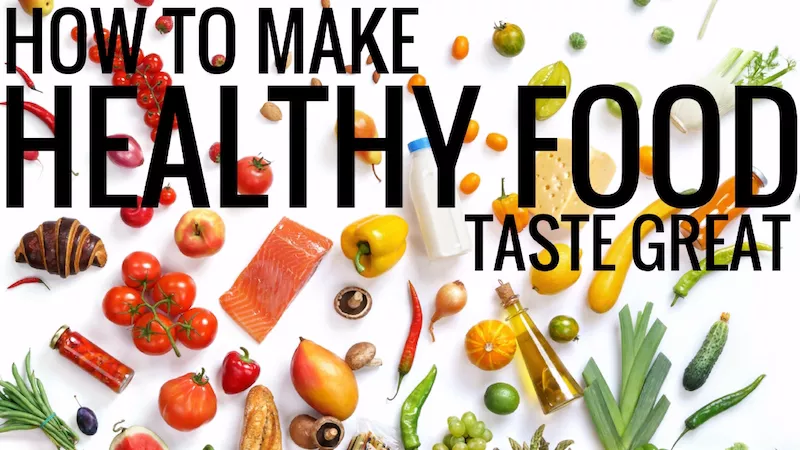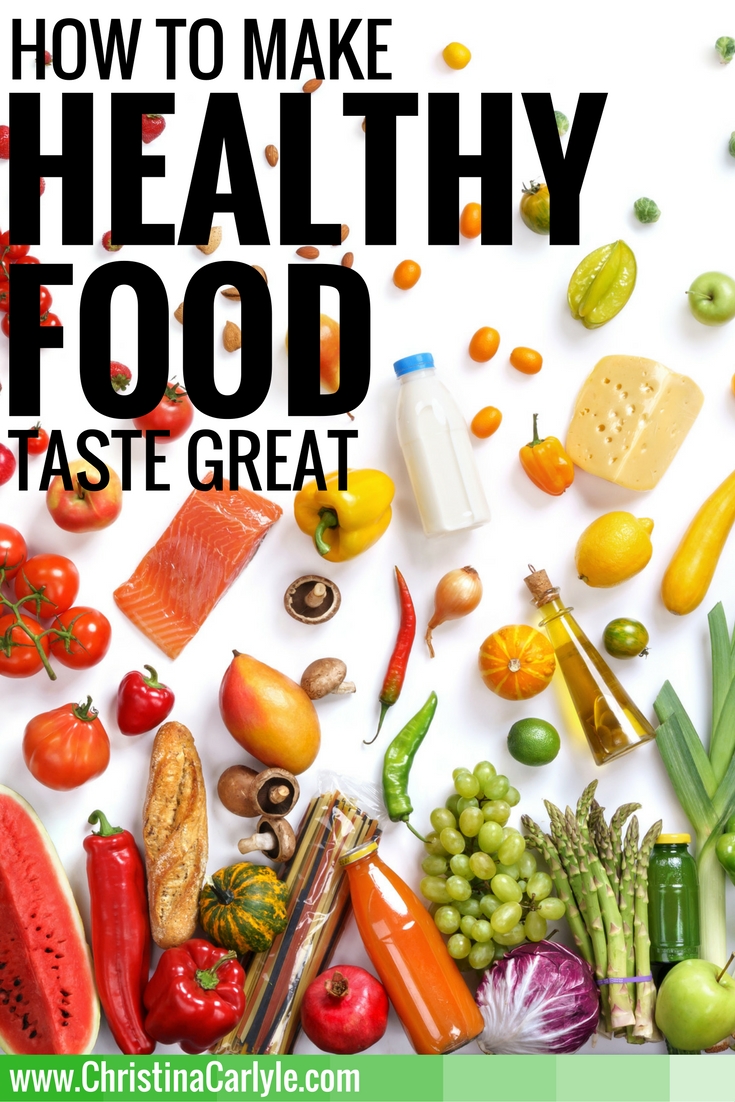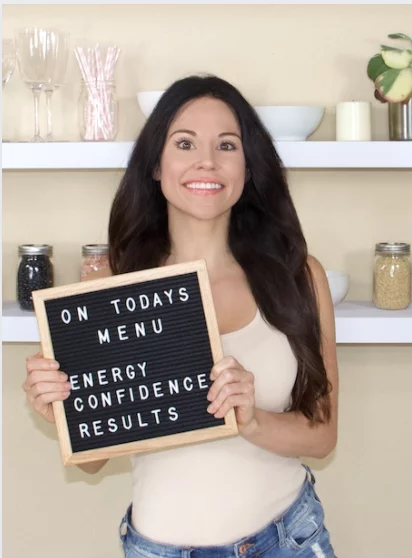Last Updated on January 27, 2019
When you go from eating what ever you want to eating healthy your taste buds are the first to know. A lot of diets fail because people struggle to find healthy foods as appealing as unhealthier foods. The key to sticking with healthy eating habits is to make them taste great. Which is what this post is all about, how to make healthy foods taste great… like slap-your-Mama-good, kind of great.
Switch Up Ingredients
Every time I go to the grocery store I try to buy 3 new things I’ve either never had or haven’t had in a while.
To find new things I always take a stroll down the International/Ethnic aisle and get a new sauce to try. Sometimes I’ll try something I’ve never had before or haven’t had in a long time. As long as the calorie count is proportional to the serving size and there is little to no sugar and artificial ingredients I’m down for everything. I’m not a picky eater. This week I got a new Spicy Peanut Sauce, Bean Sprouts, and Spaghetti Squash. This inspired my Spaghetti Squash Pad Thai that was to die for. I seriously couldn’t stop eating it. It was so good that I ate the leftovers cold for breakfast.
Last week I was handed 5 pounds of mahi-mahi, wanted to try a new Hot Sauce, and Hass avocados were on sale… That resulted in the most ridiculously good Ceviche Recipe I’ve ever made. The sky’s the limit. Try whatever looks good to you. Depending on what you got you can either got for or look up healthy recipe ideas.
For sauces, spices, dressings, and veggies I usually go for it and use them I as I cook like usual. But if I find something I’m unfamiliar with, I do a quick search online for a list of my key ingredients and ‘recipe.’ I always find a ton of recipes and inspiration for new healthy recipes that always end up tasting great.
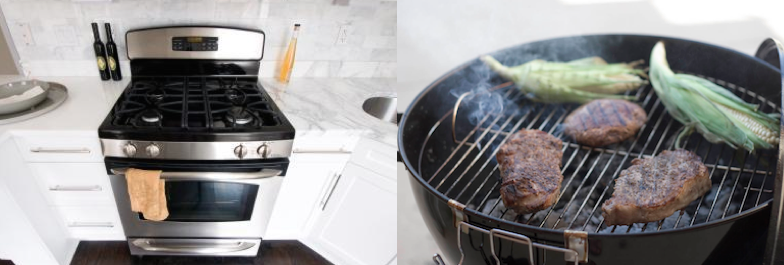
Use Different Cooking Styles
You can change the texture and taste of foods by changing the cooking style you use. Grilled chicken becomes more juicy when it’s baked. Roasting brings out the natural sweetness in vegetables. Simply changing the way you cook a food can be the difference between it tasting okay and tasting great.
Dry Heat Cooking Methods
In dry heat cooking methods, the food being cooked does not use water to cook the food. The food is left dry and hot air is circulated around the food, cooking it.
Here’s a List of Different Dry Cooking Methods:
Baking
In baking, method of cooking, the food is cooked using convection heating. The food is put into an enclosed area where heat is then applied and the movement of heat within the confined space, acts on the food that makes it get cooked.
Steaming
To steam food, water is added to a pot and then a stand is placed inside the pot. The water level should be under the stand and not above it. There is no contact between the food and the water that is added to the pot. Food is then placed on the stand and heat is applied. The hot steam rising from the boiling water cooks the food. There is never contact between the food and the water inside the pot. This method of cooking for vegetables is very good as the food does not lose its flavor and much of the nutrients are not lost during the cooking.
Grilling
There are two methods of grilling that are used these days. This is when food is cooked over hot charcoal on an open fire. The food is placed on top of the burning charcoal. The other method is using grills in which the food is placed on the grill tray over open flame. The heat can be gas-generated or electric-generated depending on the type of stove used. Using either method, the heat seals the outside part of the food and the juice inside the food cooks it.
Roasting
With roasting, direct heat is applied to the food. The heat seals the outside part of the food and the juice inside the food cooks the food. Roasting is mainly used when cooking fleshy food like fish, meat or chicken. When heat is applied to the outer covering of the food, it seals it up thereby trapping all the juices inside the food. Food is frequently rotated over the spit so that there is even heating applied to all parts of the food.
Moist Heat Cooking Methods
In moist heat cooking methods, liquid is used as a medium to cook the food. The moist heat cookery methods include: boiling, stewing, shallow frying, deep frying, barbecuing, and basting. All these moist heat cooking methods use liquid to cook the food in.
Boiling
This is the most common method of cooking and is also the simplest. The liquid is usually thrown away after the food is cooked.
Stewing
In the process of cooking using the stewing method, food is cooked using a lot of liquid. Different kinds of vegetables are chopped, diced or cubed and added to the pot. It’s important that the vegetables that take the longest to cook to be put into the pot first and the ones that need least cooking to be put in last. In this way much of the nutrient contents of the food does not get lost.
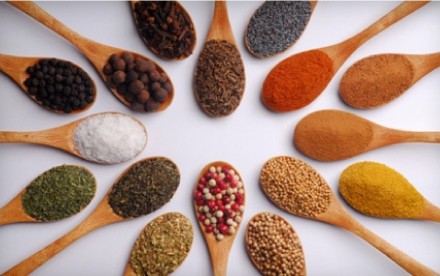
Use Different Spices, Herbs, and Fruit Juices for Flavor
You can dramatically change the way meat and veggies taste by seasoning them with different herbs, spices, and fruit juices. Try one or more different spices and herbs to add complex flavor profiles to your favorite meats and vegetables. There are no rule here. Experiment. Have some fun with it!
I tried adding cinnamon to chicken one day, and I loved it! Sounds kinda weird at first, but it adds a nice nutty layer of interesting flavor that’s far from boring. Mix and match whatever spices, herbs, and juices you like and create your own interesting flavor combinations that make you happy.
Plus, these preferred seasonings are low calorie, low fat, and pack a lot of additional health benefits, too.
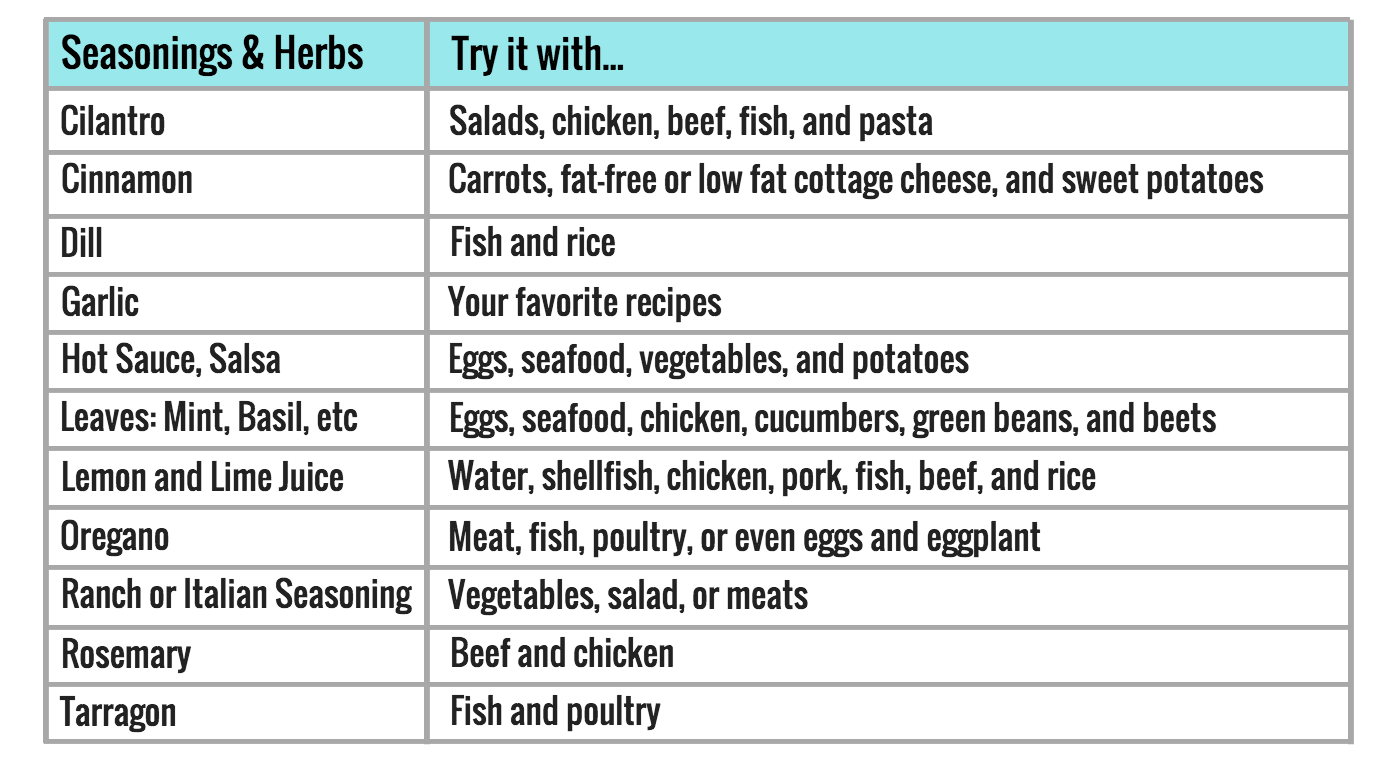
Here are a few of my favorite flavors (and why I love them)
Cinnamon
Health Benefit: Can lower blood sugar, triglycerides, LDL, and total cholesterol in people with type 2 diabetes. Aim for one-fourth to one-half teaspoon of cinnamon twice a day.
Cooking Suggestions: Dip berries or bananas in low-fat greek yogurt, then in a mix of 1 tsp. ground cinnamon and 1/4 cup brown sugar.
Turmeric
Health Benefit: Contains curcumin, which can inhibit the growth of cancer cells. Try to have 500 to 800 milligrams a day. Turmeric also helps regulate hormone levels.
Cooking Suggestions: For an Indian flavor, add 1/4 teaspoon turmeric to water when cooking 1 cup rice.
Rosemary
Health Benefit: Stops gene mutations that could lead to cancer and may help prevent damage to the blood vessels that raise heart attack risk.
Cooking Suggestions: For a delicious chicken rub, combine 2 teaspoons rosemary leaves with 2 teaspoons seasoning salt and 1/2 teaspoon thyme leaves.
Garlic
Health Benefit: Studies suggest that one or two cloves weekly provide cancer-prevention benefits. Destroys cancer cells and may disrupt the metabolism of tumor cells.
Cooking Suggestions: Let garlic sit for 10 to 15 minutes after chopping and before cooking so the active form of the protective phytochemicals develops then sauté fresh garlic over low heat and mix with lean meats and vegetables of your choice.
Paprika, Cayenne, and Red Chili Flakes
Health Benefit: Contains capsaicin, whose anti-inflammatory and antioxidant effects may lower the risk of. There’s no specific recommended dose, but moderation is probably the best way to go.
Cooking Suggestions: Combine 1 1/2 tsp. paprika, 1/2 tsp. ground thyme and 1/2 tsp. ground red pepper to spice up popcorn.
Ginger
Health Benefit: Can decrease nausea; may also relieve pain and swelling associated with arthritis. Ginger can also hinder blood clotting, so if you’re about to have surgery or are taking blood thinners or aspirin, be sure to talk to your doctor first.
Cooking Suggestions: Try adding 1/4 tsp. of ground ginger to vegetables like carrots and sweet potatoes, as well as fresh fruit (especially peaches).
Oregano
Health Benefit: A USDA study found that, gram for gram, oregano has the highest antioxidant activity of 27 fresh culinary herbs.
Cooking Suggestions: To spice up tomato soup, add 3/4 tsp. oregano to 1 can; add 1/2 tsp. to 2 cups pasta or pizza sauce. Substitute 1 tsp. dried oregano for 2 tsp. fresh.
Other spices you should keep an eye out for due to their fat burning abilities include:
- Cardamom
- Cumin
- Ginseng
- Black pepper
- Coriander
Check out my healthy recipes that incorporate these styles and techniques by clicking here.
Your Coach and Biggest Cheerleader
xxoo

